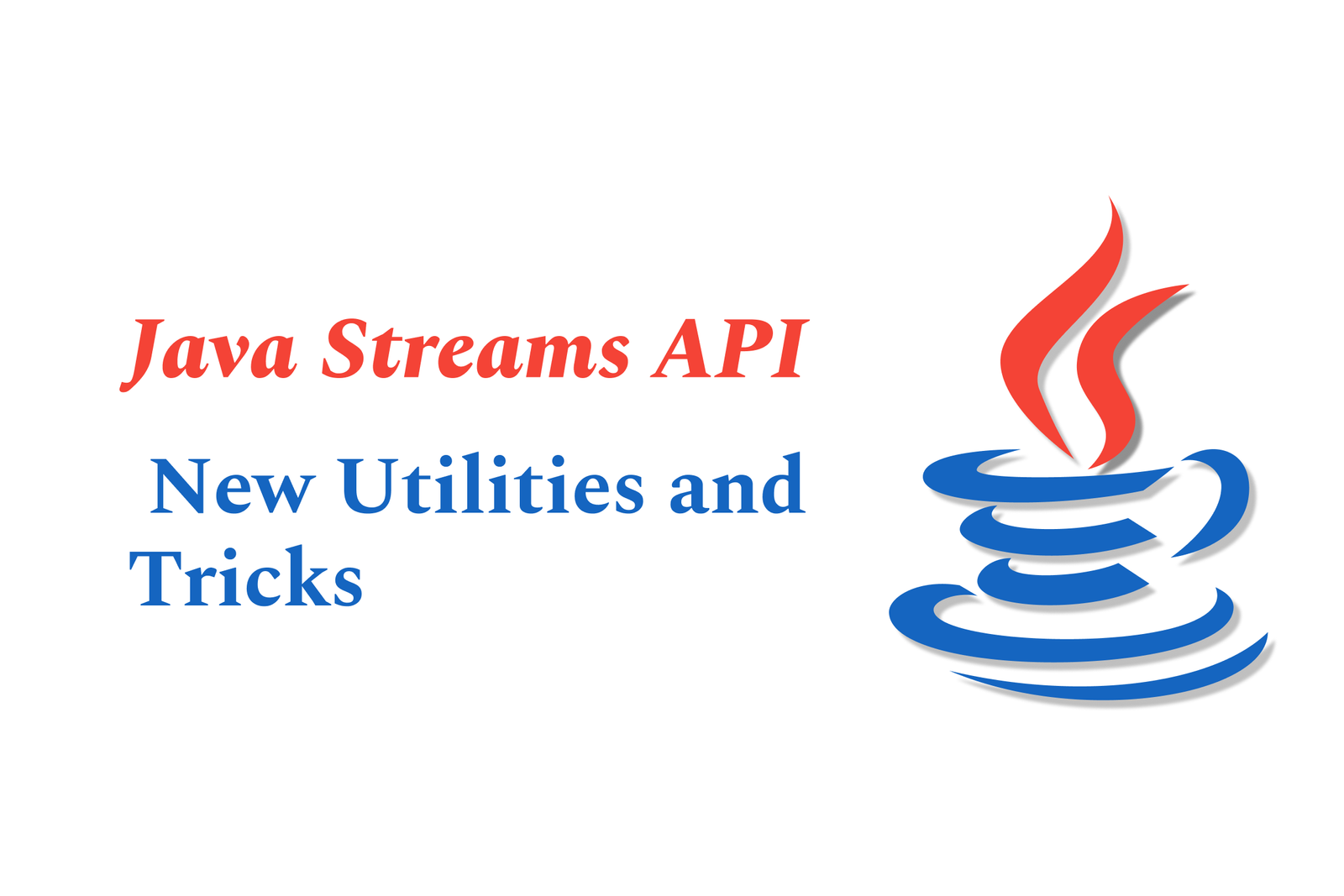Java Streams API: New Utilities and Tricks
The Java Streams API offers a powerful, functional-style way to process sequences of data with new utilities like advanced collectors, primitive stream builders, and enhanced parallel support. These tricks enable concise, efficient, and readable data manipulation in modern Java.
Java Streams API: New Utilities and Tricks
1 ) Overview of Java Streams API
Java introduced the Streams API in Java SE 8 to support functional style operations on sequences of elements, enabling map reduce transformations on collections. Streams differ from collections as they do not store elements, are functional in nature (do not modify the source), support lazy evaluation, can be infinite, and consumable only once.
2 ) Core Interfaces and Classes
BaseStream<T,S>: Base interface for all stream types.
Stream<T>: Stream of objects.
IntStream, LongStream, DoubleStream: Streams of primitive int, long, and double types for better performance.
Collectors: Utility class providing implementations of reduction operations to accumulate elements into collections or produce summaries.
StreamSupport: Low level utility methods to create and manipulate streams.
3 ) Key Features of the Streams API
Supports both sequential and parallel execution.
Operations are divided into intermediate (lazy) and terminal (eager) stages.
Easily integrated with collections, arrays, I/O channels, and generator functions as sources.
Provides aggregate operations like filter, map, reduce, search, and collect, enabling clean and expressive data processing pipelines.
4 ) New Utilities and Enhancements
Introduction of Collectors that ease accumulation and summarization tasks.
Builders for streams and primitive streams allowing custom construction of streams.
Comprehensive stream operations supporting efficient processing and parallelism.
5 ) Practical Usage Example
Example code to calculate the sum of weights of red widgets using streams:
java
int sum = widgets.stream()
.filter(b > b.getColor() == RED)
.mapToInt(b > b.getWeight())
.sum();
6 ) Advantages Over Collections
Streams enable a functional programming style improving code readability and maintainability.
Stream operations can be combined in pipelines that are lazy and optimized internally for efficiency.
Support for parallel processing with simple API changes improves performance on multi core systems.
7 ) Tips and Tricks
Use primitive streams (IntStream, LongStream, DoubleStream) to avoid boxing overhead.
Utilize Collectors subclasses for common reduction tasks to simplify the code.
Build custom streams using Stream.Builder when dynamic stream creation is needed.
Apply short circuiting terminal operations like `findFirst` or `limit(n)` to efficiently handle infinite streams.
Remember streams are consumable once; create new streams to reprocess data.
This concise knowledge of Java Streams API essentials and utilities enables developers to write cleaner, more efficient, and expressive data processing code leveraging modern Java features.
https://justacademy.in/news-detail/new-android-security-updates-and-patches
https://justacademy.in/news-detail/react-native-vs-flutter-2025:-the-battle-heats-up-again
https://justacademy.in/news-detail/top-flutter-packages-to-use-in-2025
https://justacademy.in/news-detail/flutter-native-compilation-for-web
https://justacademy.in/news-detail/swiftui-for-mac-catalyst:-building-cross-device-apps
Related Posts
In 2025, top Angular libraries offer modern, feature-rich components and tools for building dynamic web apps. From powerful data grids to low-code platforms like UI Bakery, these libraries enhance development speed, UI design, and scalability, making them essential for Angular developers.
Migrating from AngularJS to Angular 17 involves gradually upgrading your app by running both frameworks together using tools like ngUpgrade, rewriting components in TypeScript, and adopting Angular’s modern architecture to enhance performance, maintainability, and long-term support.
Angular state management tools help organize and handle app data efficiently, improving scalability and maintainability. Popular options include NgRx for robust, RxJS-based patterns, and newer Signal Store solutions that offer simpler, reactive approaches integrated tightly with Angular’s latest features.
RxJS in Angular empowers developers to manage asynchronous data streams with powerful operators like `forkJoin`, `combineLatest`, and `zip`. Mastering these key operators in 2025 is essential for building efficient, reactive applications that handle complex event sequences seamlessly.
Angular performance optimization in 2025 focuses on improving app speed and responsiveness by using techniques like OnPush change detection, lazy loading, efficient data caching, and AOT compilation. These practices reduce load times, enhance user experience, and ensure scalable, fast Angular applications.
In 2025, Angular remains preferred for large-scale, enterprise apps with its robust, all-in-one framework, while Vue attracts developers seeking simplicity and fast development for smaller projects. Both frameworks excel, with choice driven by project needs and team expertise.
Angular Signals are a new reactive primitive in Angular 16 that enable fine-grained, efficient change detection by automatically tracking dependencies and updating only affected parts of the UI. They simplify state management and boost app performance, revolutionizing Angular's reactivity model.
Angular interview questions to prepare in 2025 focus on core concepts like components, directives, data binding, routing, and dependency injection, along with TypeScript mastery and latest Angular features to ensure strong practical knowledge for building scalable, efficient web applications.
AngularJS reached its official end of support in January 2022, meaning no further updates or security patches. To ensure app security and performance, developers should consider migrating to modern Angular versions or seek third-party long-term support options if immediate migration isn’t possible.
The Angular Roadmap 2025 highlights upcoming features focused on improving developer experience and performance, including zoneless Angular, Signals integration, enhanced Forms, async data handling, improved HMR, and expanded Angular Material/CDK enhancements, driving modern, efficient web app development.










